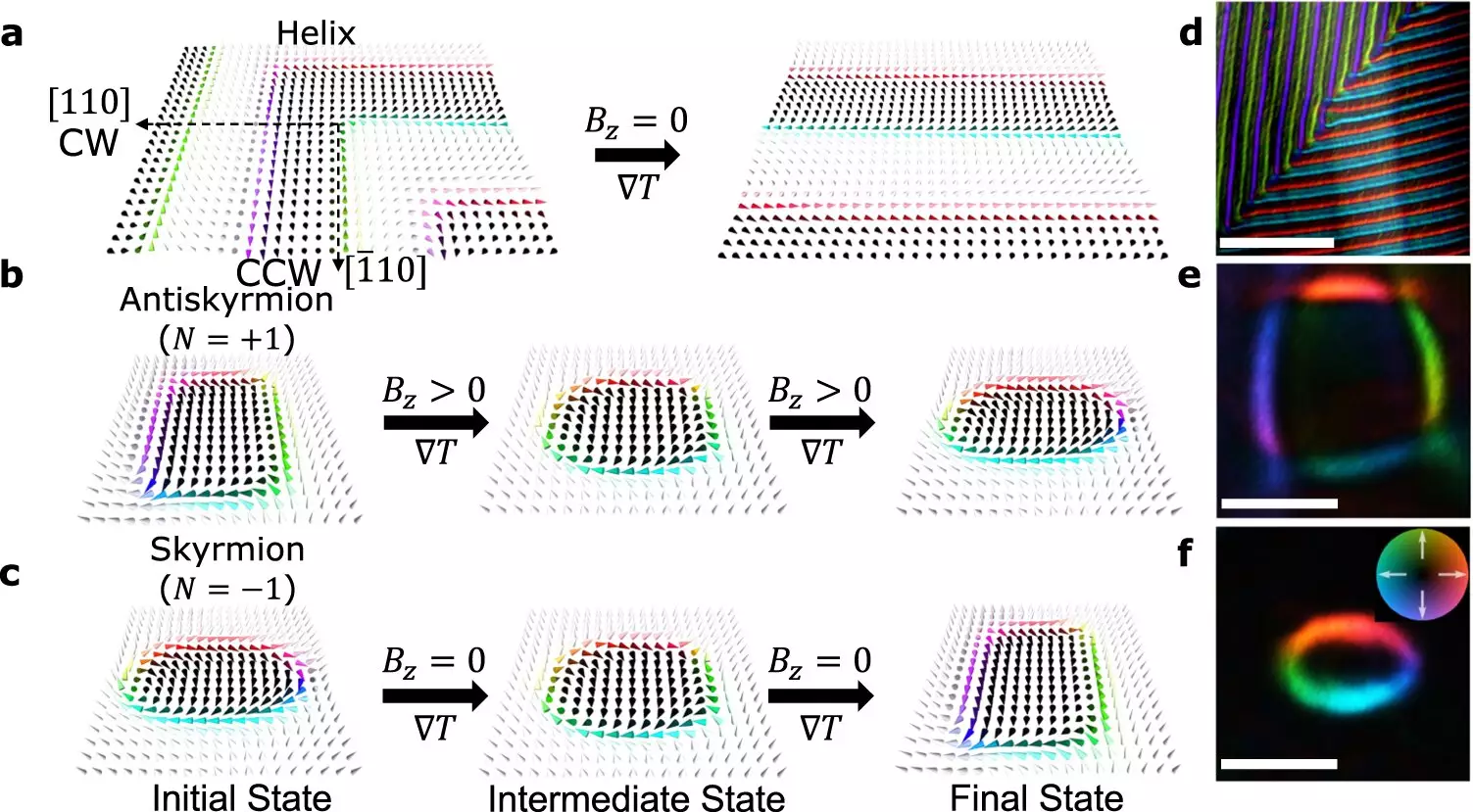Spintronics, a field that explores the manipulation of electron spin for information storage and processing, has seen significant advancements in recent years. In a groundbreaking experiment, researchers from RIKEN and their collaborators showcased the potential of heat-guided transformations in creating spin textures known as skyrmions and antiskyrmions. These structures, which hold promise for next-generation memory devices, were successfully manipulated at room temperature using heat gradients and magnetic fields. This innovation could revolutionize spintronics by reducing energy consumption and utilizing waste heat to drive transformations.
Traditionally, scientists have relied on electric current to manipulate skyrmions and antiskyrmions. However, the energy consumption and heat generation associated with current-based methods prompted the exploration of alternative approaches. Led by Xiuzhen Yu at the RIKEN Center for Emergent Matter Science, the researchers aimed to investigate the use of heat gradients in creating transformations between these spin textures.
To conduct their research, the team utilized a focused-ion beam, a highly precise fabrication system, to create a microdevice from a bulk single crystal magnet. This magnet, composed of iron, nickel, palladium, and phosphorous atoms, served as the material for their experiments. Lorentz scanning microscopy, an advanced technique for examining magnetic properties at small scales, was then employed to observe the behavior of the spin textures.
During their experiments, the researchers discovered intriguing transformations between skyrmions and antiskyrmions. When a temperature gradient was applied simultaneously with a magnetic field at room temperature, the antiskyrmions within the crystal initially transformed into non-topological bubbles. These bubbles acted as a transition state between skyrmions and antiskyrmions. As the temperature gradient was further increased, the non-topological bubbles transitioned into stable skyrmions.
Remarkably, the skyrmions maintained their stable configuration even when the thermal gradient was removed. This finding aligned with theoretical expectations, providing further validation for the research. However, an unexpected revelation surprised the team during their investigations. Without the presence of a magnetic field, they observed a transformation from skyrmions to antiskyrmions solely due to the applied thermal gradient.
The potential to utilize waste heat for driving transformations between skyrmions and antiskyrmions holds great significance. Fehmi Sami Yasin, a postdoctoral researcher in Yu’s group, elaborated on the implications of this discovery. By exploiting waste heat through a thermal gradient, it becomes possible to guide the transformation process depending on whether a magnetic field is applied or not. These findings offer a promising avenue for designing information storage devices, such as nonvolatile memory devices, that rely on waste heat as a driving force.
One particular highlight of this research is that these transformations were achieved at room temperature. This pivotal aspect opens up opportunities for the development of practical applications in our everyday lives. Yu emphasized the significance of these findings and expressed the group’s excitement for future endeavors. They plan to further explore the manipulation of skyrmions and antiskyrmions in more efficient ways, including the thermal control of antiskyrmion motion. This line of research aims to pave the way for the realization of thermospintronic and other spintronics devices that can be seamlessly integrated into our daily routines.
The study conducted by researchers from RIKEN and their collaborators marks a breakthrough in the field of spintronics. Through the utilization of heat-guided transformations, the team successfully manipulated spin textures, opening up new possibilities for next-generation memory devices. By harnessing waste heat and employing magnetic fields, skyrmions and antiskyrmions could potentially be used as fundamental building blocks for nonvolatile memory devices. The ability to achieve these transformations at room temperature adds to the significant practical implications of this research. With further advancements and exploration, spintronics may undergo a transformation of its own, revolutionizing the way we store and process information in everyday life.


Leave a Reply